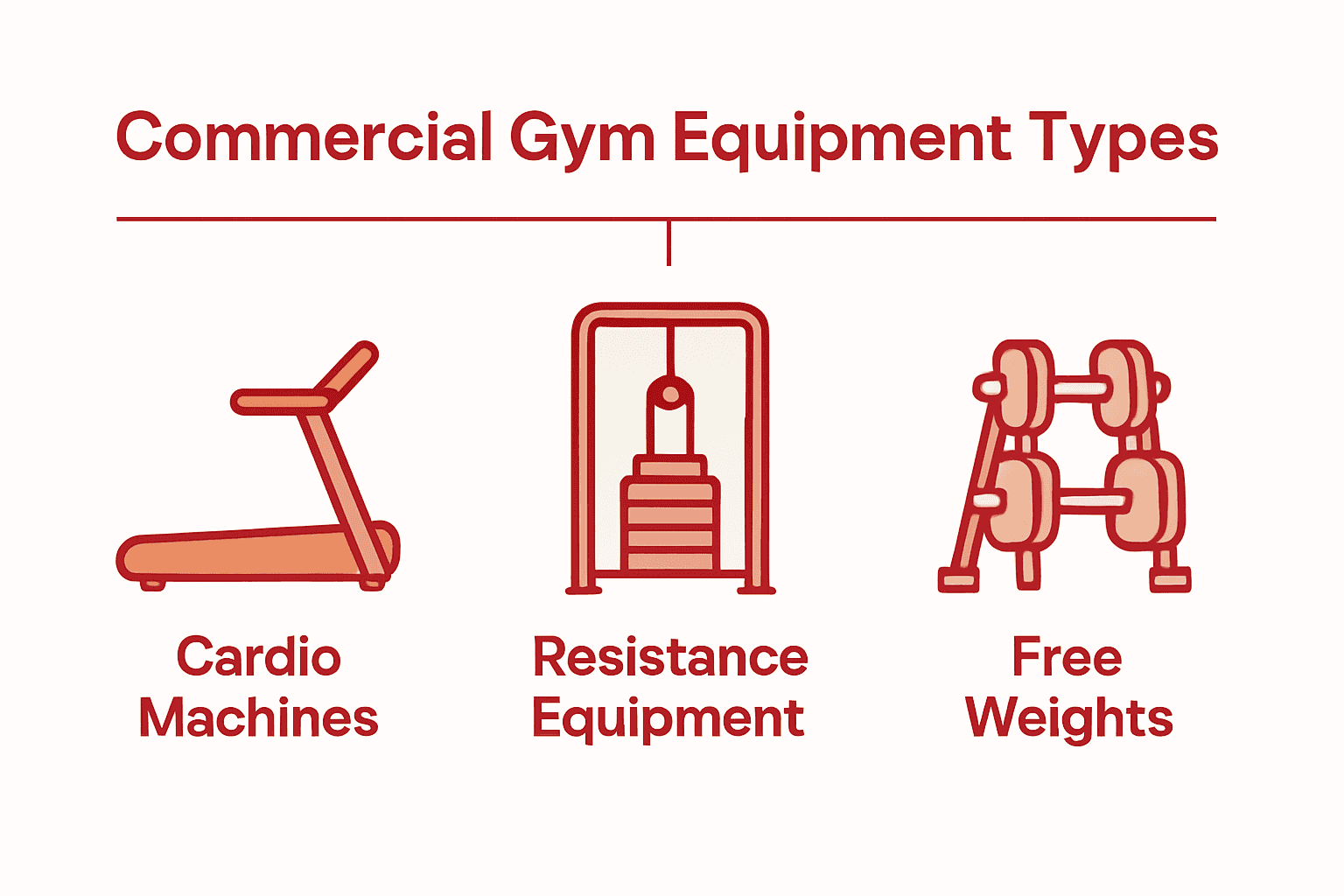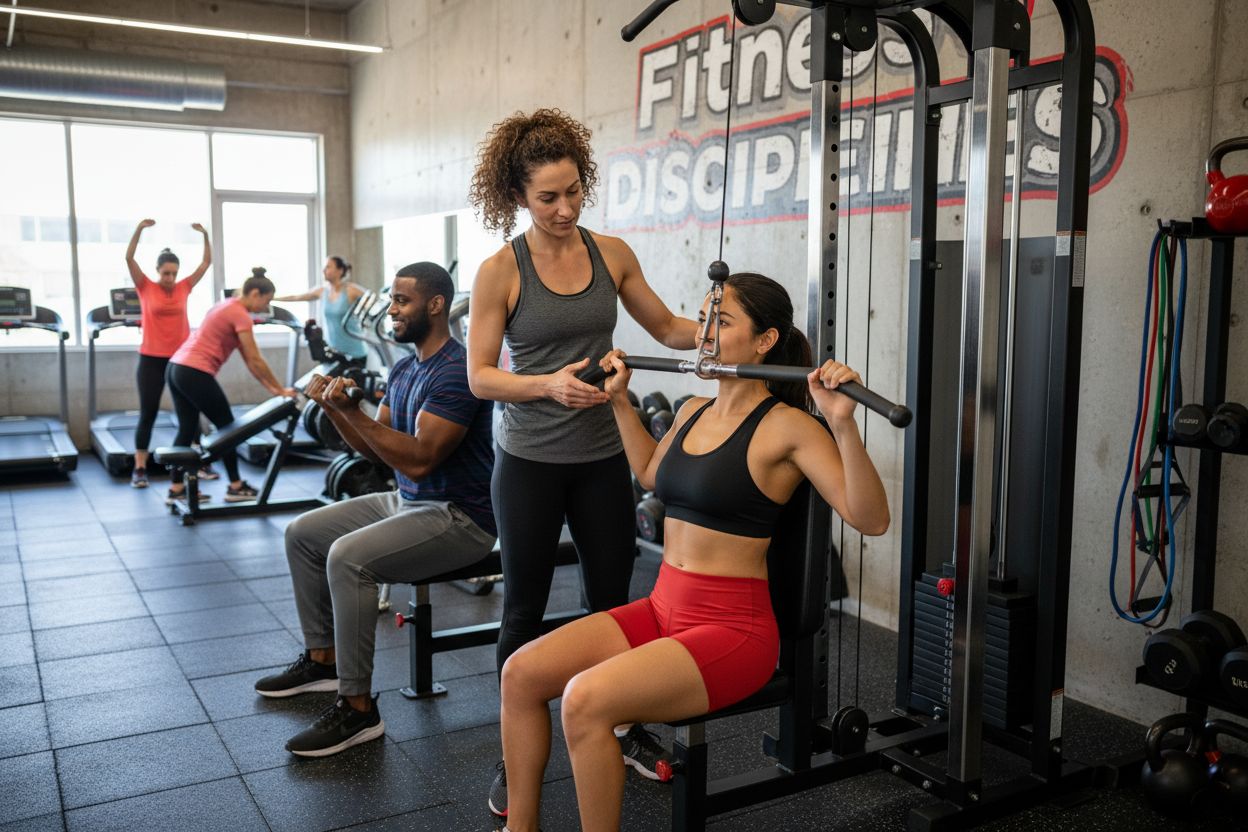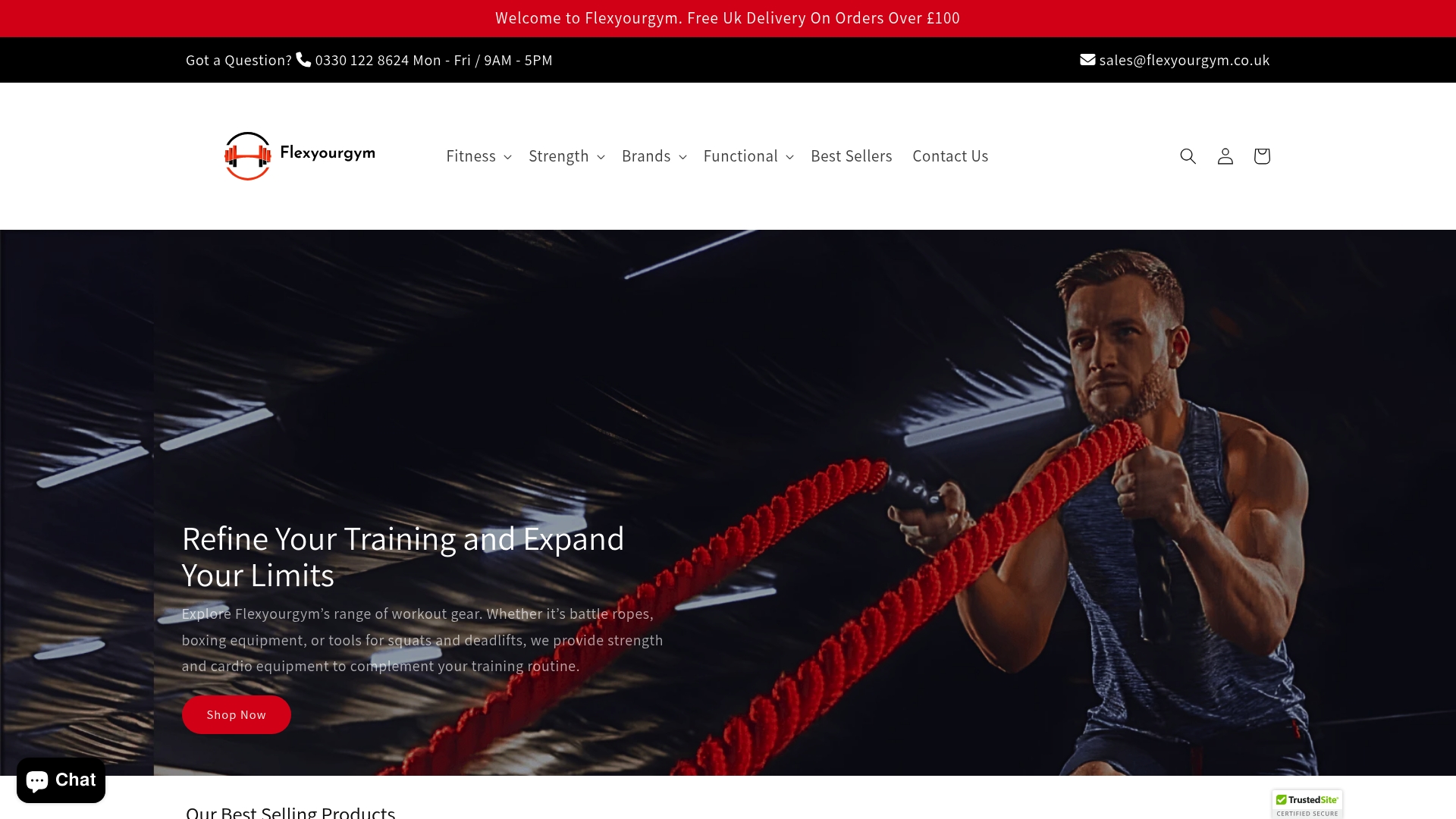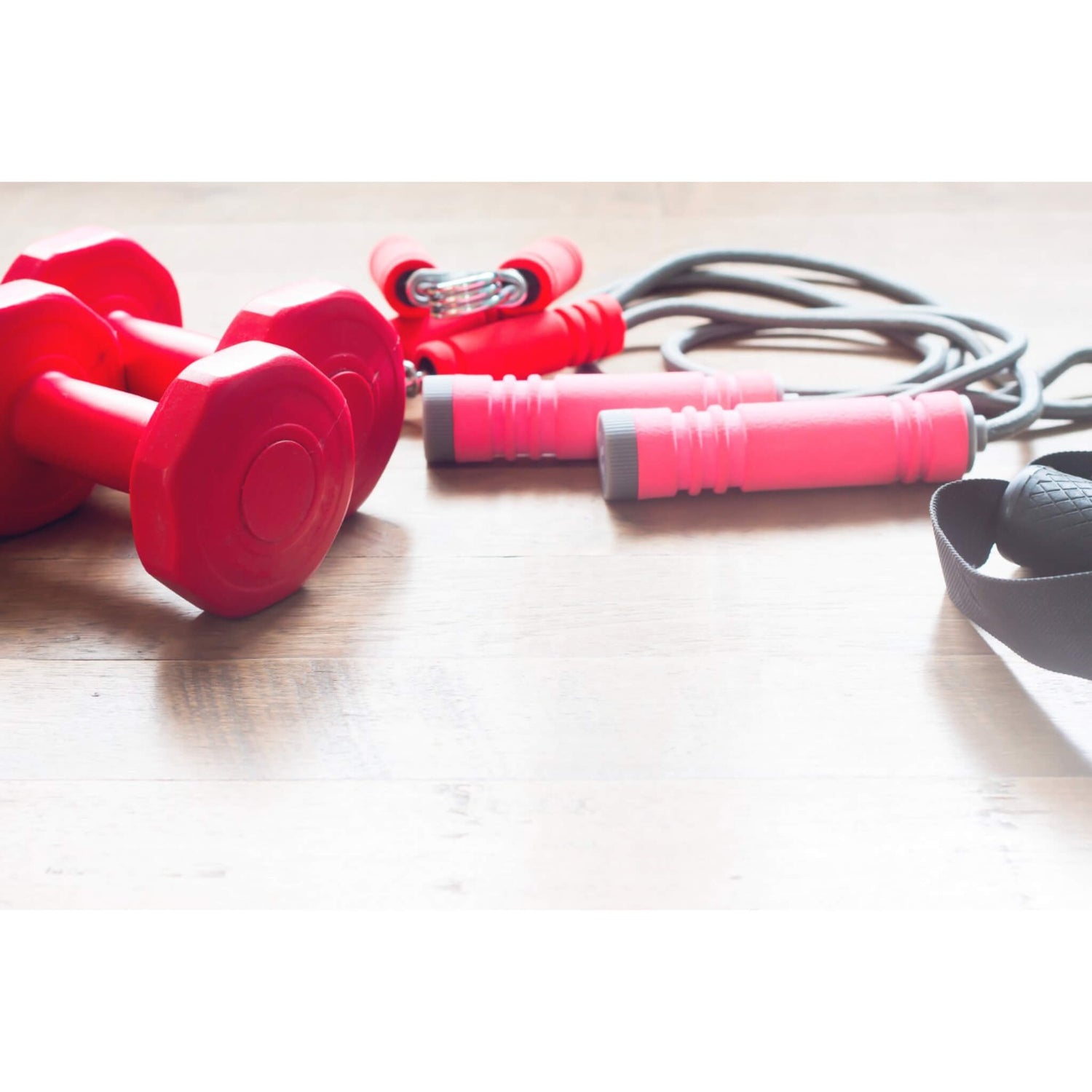Commercial gym equipment might look similar to what you see at home, but there is a world of difference beneath the surface. Some machines in top gyms are engineered to handle hundreds of users a day without missing a beat. The real shock is their durability is not even the cleverest part. Packed with smart sensors and digital tracking, today’s fitness machines double as personal trainers, making ordinary workouts feel almost futuristic.
Table of Contents
- Defining Commercial Gym Equipment: Types And Features
- The Importance Of Quality In Commercial Gym Equipment
- How Commercial Gym Equipment Supports Different Workouts
- Key Considerations For Selecting Commercial Gym Equipment
- The Impact Of Technology On Commercial Gym Equipment
Quick Summary
| Takeaway | Explanation |
|---|---|
| Commercial equipment ensures durability and safety. | Designed with high-quality materials, these machines withstand intense use while prioritising user safety through advanced engineering features. |
| Versatile machines support diverse workouts. | Commercial gym equipment accommodates various fitness disciplines, enabling tailored training strategies to meet specific health and performance goals. |
| Investment in quality yields long-term savings. | High-quality equipment reduces maintenance costs, increases lifespan, and ensures consistent performance, benefiting fitness facilities financially over time. |
| Technology enhances user experience and tracking. | Smart connectivity and performance metrics provide users with detailed insights, fostering personal accountability and optimising workout efficiency. |
| Careful selection is crucial for success. | Assessing performance specifications, financial considerations, and user demographics ensures equipment meets the needs of both users and the facility. |
Defining Commercial Gym Equipment: Types and Features
Commercial gym equipment represents a specialised category of fitness machinery engineered for sustained, intensive use in professional fitness environments. Fitness industry standards define these machines as robust, purpose-built tools designed to withstand multiple daily users across different fitness settings.
Key Characteristics of Commercial Gym Equipment
Unlike home fitness equipment, commercial gym machines are constructed with superior durability and engineering precision. These machines feature heavy-gauge steel frames, reinforced components, and advanced mechanical designs that can endure constant usage without compromising performance or safety. Professional fitness equipment typically includes multiple adjustment points, ergonomic configurations, and enhanced weight stacks to accommodate diverse body types and fitness levels.
The following table presents key quality features of commercial gym equipment, explaining how each element contributes to safety, durability, and overall user experience.
| Feature | Description |
|---|---|
| Heavy-gauge steel frames | Provides superior strength and stability under heavy use |
| Advanced mechanical designs | Ensures smooth, consistent resistance and minimises wear |
| Multiple adjustment points | Allows customisation for different users and exercises |
| Reinforced connection points | Reduces risk of mechanical failure or injury |
| Ergonomic configurations | Enhances comfort and safety for a variety of body types |
| Precision weight stack guides | Promotes safety by delivering accurate movement paths |
| Stress-tested components | Guarantees reliability by withstanding repeated intensive usage |
Functional Categories of Commercial Equipment
Commercial gym equipment encompasses several essential categories that address comprehensive fitness objectives
:
- Cardiovascular Machines: Treadmills, ellipticals, stationary bikes, and rowing machines designed for sustained aerobic training
- Resistance Training Equipment: Weight machines targeting specific muscle groups, including leg press, chest press, and cable machines
- Free Weight Stations: Barbells, dumbbells, weight benches, and squat racks enabling strength and functional training
These machines are engineered with precision mechanisms that provide smooth movement patterns, minimal friction, and consistent resistance.
Below is a table summarising the main categories of commercial gym equipment, highlighting their primary focus and examples as described in the article.
| Category | Primary Training Focus | Examples |
|---|---|---|
| Cardiovascular Machines | Aerobic conditioning | Treadmills, ellipticals, stationary bikes, rowers |
| Resistance Training | Muscle group strengthening | Leg press, chest press, cable machines |
| Free Weight Stations | Strength & functional gains | Barbells, dumbbells, weight benches, squat racks |
| Functional Trainers | Multi-joint functional moves | Functional training stations, cable crossovers |
| Multi-gym Solutions | Integrated varied training | Combination systems for multiple exercises |
 Our range of professional gym gear represents the pinnacle of technical design and functional performance in fitness equipment.
Our range of professional gym gear represents the pinnacle of technical design and functional performance in fitness equipment.
The primary distinction between commercial and home gym equipment lies not just in construction quality but in the comprehensive engineering approach. Commercial machines integrate advanced biomechanical principles, ensuring safe, effective movements that minimise injury risk while maximising workout efficiency. Each piece of equipment undergoes rigorous testing to meet professional fitness industry standards, guaranteeing reliability and performance across extensive usage scenarios.
The Importance of Quality in Commercial Gym Equipment
Quality stands as the cornerstone of effective commercial gym equipment, representing far more than aesthetic considerations or initial purchase price. Research from the NHS highlights the critical relationship between equipment quality and user safety, demonstrating that superior fitness machinery directly impacts exercise outcomes and user experience.
Safety and Performance Dynamics
High-quality commercial gym equipment ensures comprehensive user protection through advanced engineering and robust design principles. These machines incorporate multiple safety mechanisms such as precise weight stack guides, reinforced connection points, and ergonomic interfaces that minimise potential injury risks. Professional-grade equipment undergoes extensive stress testing, guaranteeing consistent performance under repeated, intensive usage conditions.
Long-Term Economic Considerations
Investing in superior commercial gym equipment represents a strategic financial decision with significant long-term benefits. Quality machines demonstrate remarkable durability, reducing maintenance expenses and replacement frequency. Key economic advantages include:
This table compares the long-term financial and operational considerations associated with investing in quality commercial gym equipment, as detailed in the article.
| Consideration | Impact on Facility Operations |
|---|---|
| Maintenance frequency | Lower due to robust construction |
| Repair costs | Reduced with high-quality, stress-tested mechanisms |
| Equipment lifespan | Extended, lowering overall replacement expenses |
| Downtime | Minimal, ensuring facility remains operational |
| Warranty/manufacturer support | Typically more comprehensive for premium equipment |
| Compatibility for upgrades | Easier integration of future technology |
- Reduced downtime through superior mechanical reliability
- Lower maintenance and repair costs
- Extended equipment lifecycle
- Consistent performance across multiple usage scenarios
Our professional chest press machines exemplify this commitment to delivering equipment that balances performance, safety, and economic efficiency.
Professional fitness environments demand equipment that transcends basic functionality. Quality commercial gym machinery integrates sophisticated biomechanical designs, ensuring smooth movement patterns, precise resistance management, and user-centric configurations. By prioritising equipment quality, fitness facilities create environments that inspire confidence, support diverse fitness goals, and deliver exceptional user experiences through meticulously engineered fitness solutions.
How Commercial Gym Equipment Supports Different Workouts
Commercial gym equipment serves as a comprehensive solution for diverse fitness objectives, offering specialised machinery that supports targeted training approaches across multiple disciplines. Fitness research indicates that versatile equipment enables individuals to develop comprehensive fitness strategies tailored to specific health and performance goals.
Versatility Across Fitness Disciplines
Modern commercial gym equipment is engineered to accommodate various workout styles, from strength training and cardiovascular conditioning to rehabilitation and functional fitness. Each machine category provides unique benefits that target specific physiological systems, allowing users to create nuanced, multi-dimensional fitness programmes.
 Resistance machines focus on isolated muscle group development, while functional trainers enable complex, multi-joint movements that simulate real-world physical interactions.
Resistance machines focus on isolated muscle group development, while functional trainers enable complex, multi-joint movements that simulate real-world physical interactions.
Adaptable Training Configurations
The sophisticated design of commercial gym equipment allows for remarkable adaptability across different fitness levels and training objectives. Key adaptability features include:
- Adjustable resistance levels
- Multiple grip and positioning options
- Customisable range of motion settings
- Ergonomic configurations supporting various body types
Our multi-gym solution demonstrates how modern equipment can provide comprehensive workout possibilities within a single integrated system.
Professional fitness equipment transcends traditional workout limitations by providing precision-engineered tools that support progressive training methodologies. Whether an individual aims to build muscular strength, improve cardiovascular endurance, or engage in rehabilitation exercises, commercial gym machinery offers targeted solutions that adapt to evolving fitness requirements, enabling users to pursue sophisticated, personalised fitness journeys with confidence and scientific precision.
Key Considerations for Selecting Commercial Gym Equipment
Selecting appropriate commercial gym equipment demands a strategic approach that balances performance requirements, budget constraints, and long-term fitness facility objectives. Fitness industry research emphasises the importance of comprehensive evaluation beyond surface-level specifications.
Performance and Technical Specifications
Evaluating commercial gym equipment requires a multifaceted analysis of technical capabilities and performance metrics. Critical assessment factors include biomechanical design, range of motion capabilities, resistance mechanisms, and ergonomic configurations. Professional fitness environments must consider equipment that provides precise movement patterns, accommodates diverse user physiques, and supports progressive training methodologies.
Financial and Operational Considerations
Investment in commercial gym equipment extends beyond initial purchase price, encompassing long-term operational expenses and potential return on investment. Key financial considerations include:
- Maintenance frequency and associated costs
- Equipment durability and expected service lifecycle
- Compatibility with existing fitness facility infrastructure
- Potential for future technological upgrades
- Warranty and manufacturer support provisions
Read our comprehensive guide on free weights to understand how strategic equipment selection can enhance overall fitness programming.
Ultimately, selecting commercial gym equipment represents a nuanced decision that requires balancing technical specifications, financial constraints, and user experience considerations. Successful procurement involves understanding specific facility needs, anticipated user demographics, and long-term fitness programming objectives. By adopting a holistic approach to equipment selection, fitness professionals can create environments that inspire performance, ensure user safety, and support comprehensive fitness journeys across diverse training modalities.
The Impact of Technology on Commercial Gym Equipment
Technological innovations are fundamentally transforming commercial gym equipment, introducing sophisticated digital capabilities that revolutionise fitness tracking, user experience, and performance measurement. Advanced research in fitness technology demonstrates how digital integration is creating more personalised, data-driven fitness environments.
Digital Performance Tracking
Modern commercial gym equipment incorporates intelligent sensors and digital interfaces that provide real-time biomechanical analysis. These technological enhancements enable precise measurement of workout intensity, movement efficiency, muscle engagement, and physiological responses. Users can now access comprehensive performance metrics, including repetition count, resistance consistency, range of motion, and comparative performance data, transforming traditional exercise into a scientifically monitored experience.
Smart Connectivity and User Experience
Connectivity has become a cornerstone of contemporary commercial gym equipment, offering unprecedented levels of personalisation and interaction. Key technological features include:
- Bluetooth and Wi-Fi enabled workout tracking
- Integration with fitness mobile applications
- Cloud-based performance logging
- Personalised workout recommendation algorithms
- Remote coaching and virtual training options
Explore our multi-gym solutions that demonstrate cutting-edge technological integration in fitness equipment.
Technological advancements are not merely aesthetic improvements but fundamental redesigns of how individuals interact with fitness machinery. By combining sophisticated sensor technology, data analytics, and user-centric design, commercial gym equipment is evolving from passive workout tools to intelligent, interactive fitness companions that provide comprehensive insights into personal health and performance progression.
Take the Next Step with Trusted Commercial Gym Equipment
You have just discovered why quality and design define the importance of commercial gym equipment. Perhaps you are worried about investing in machines that break down or do not meet everyone’s needs. At Flexyourgym.co.uk, we help you build confidence in your facility with proven solutions engineered for both safety and performance. Our Gym Gear – Durable Cardio Equipment for Home & Gyms meets strict reliability standards and supports all levels, so you can future-proof your setup and support every user’s fitness journey.

Do not settle for guesswork or second-best when it comes to your gym investment. Explore our full range at Flexyourgym.co.uk and view our dedicated Power Racks UK – Smith Machines & Cable Stations for All Levels to discover robust, professional equipment trusted by leading fitness providers. Secure your advantage today with premium gear built for results.
Frequently Asked Questions
What defines commercial gym equipment?
Commercial gym equipment refers to fitness machines specifically designed for high-frequency use in professional settings. It is built with superior durability and engineering to withstand the demands of multiple users throughout the day.
What are the key features to consider when selecting commercial gym equipment?
When selecting commercial gym equipment, focus on durability, safety features, and adaptability. Evaluate the equipment’s technical specifications, such as its biomechanical design and ergonomic configurations, to ensure it meets the needs of diverse body types and fitness levels.
How does the quality of commercial gym equipment impact user safety?
The quality of commercial gym equipment greatly affects user safety, as high-quality machines include multiple safety mechanisms and undergo rigorous testing. Prioritising quality in your equipment selection can significantly reduce the risk of injuries during workouts.
What types of workouts can be performed with commercial gym equipment?
Commercial gym equipment supports a wide range of workouts, including cardiovascular training, resistance training, and functional fitness. Use machines tailored for specific training approaches to achieve a balanced and effective fitness programme.
How can technology enhance the experience of using commercial gym equipment?
Modern commercial gym equipment integrates technology for enhanced performance tracking and user interaction. By utilising smart features like real-time data analysis and workout recommendations, users can tailor their fitness experiences and monitor their progress effectively.
What long-term financial benefits can be expected from investing in quality commercial gym equipment?
Investing in quality commercial gym equipment can lead to significant long-term financial benefits, including reduced maintenance costs and a longer lifespan. Expect to save on repairs and downtime, which can enhance the overall efficiency of your fitness facility.

